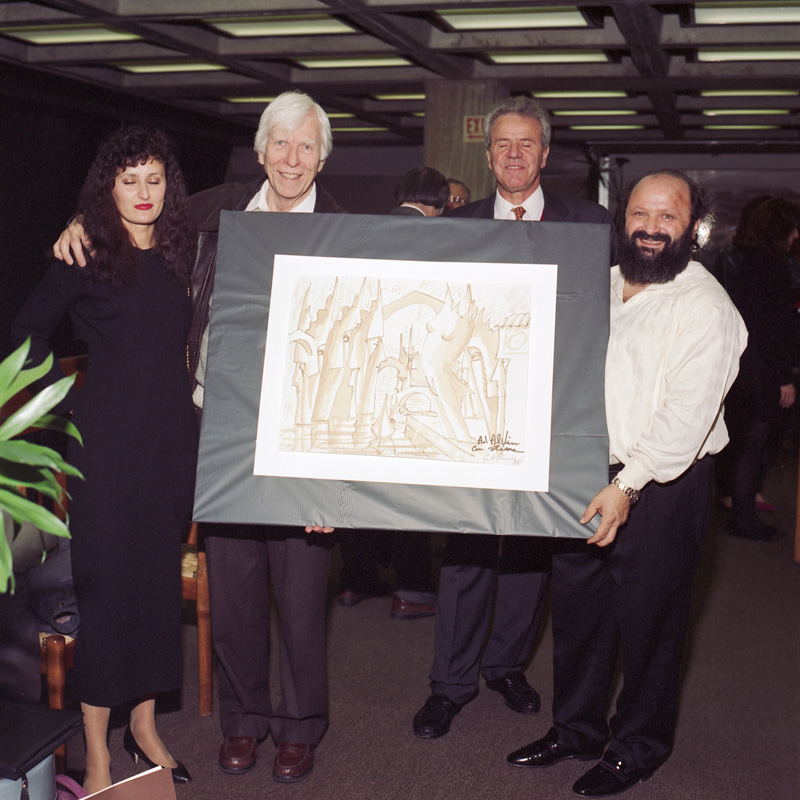Here are the tributes collected from you on Alvin Tollestrup. You can submit your recollections, too.
Alvin’s Family
“To those who have met and known my father, I do not think I would be too biased in stating that he led a uniquely remarkable life. It was a life that was certainly defined by his passion for physics, and as such it is hard to separate Alvin Tollestrup the physicist from Alvin Tollestrup the man and father because his scientific pursuits loomed so large. So it is in this context that I viewed, through the rose-colored glasses of a son, a remarkable adventure unroll, like a movie, onto the landscape of our lives and how it made an indelible imprint on us all. …”
“I would like to add a special remembrance about my father that is not about the physicist, but about him as a father to a daughter. As the only daughter in a family with three boys, I had a different relationship with my father. My brothers went to CalTech with him on weekends and worked in the shop with all the tools and soldering irons. On the other hand, as a baby, I experienced the synchrotron with a lead brick on my dress so I couldn’t crawl away and get into mischief! …”
Read the entire contribution here.
“From a young age, I loved working side‐by‐side with my father. Our greatest weekend treat was having our dad take us to the Synchrotron Lab at Caltech where we would work on some project in the machine shop or dis‐assemble circuit boards in order to recycle electronic parts. My favorite toy was constructed there. It was a 4×6 inch array of 1/8 inch axles and various brass sheave wheels that could be treated as a sort of transmission for various toys. My father carefully instructed me on how to place brass rods in the lathe and “turn a V grove” of the right width so that a rubber band could be used as a ‘Vbelt’. I remember him commenting how much he enjoyed the “feel” of the tool bit “biting” into brass as opposed cutting into aluminum or steel – there is a difference that I can still remember today. …”
“Growing up hearing my father, Alvin, say he knew he wanted to be a high energy physicist at the age of five always amazed me. Now granted this story may be slightly altered over time. I don’t know if he said at the age of five or he was in the fifth grade. Time can really be the enemy with your memory! I know that when I was five, I did not know what a physicist was let alone know the word. I know that in first grade someone asked me what my father did, and I said “I think he works for the Kellogg cereal company” because he was always going to meeting with the Kellogg group. But in reality, it was just a working group of fellow professors at Caltech’s Kellogg Radiation Lab. It has been a running joke between the two of us, “Carl, what do you want to be when you grow up? I knew I wanted to be a physicist at the age of five.” We both shrugged with the answer, me for not knowing and he for not knowing why I didn’t know! The one thing for sure is that Father wanted to be a physicist very early in his life. …”
Friends and Colleagues
July 2020 – I recall during one of our regular lunches at Fermilab around 1976 that Alvin arrived feeling very upbeat because he had just come from a meeting where he had persuaded the management (Bob Wilson) to build the Energy Doubler close enough to the main ring that beams in the two rings could be collided. That decision determined Fermilab’s future through the end of the Tevatron era.
August 2020 – “My esteem and gratitude for Alvin were born out of how he accepted in 1979 to collaborate with me and with my Italian group to design and build a collider detector at the newly approved Tevatron. He proved to be both courageous and wise, a truly a far-viewing leader and a fair and reliable collaborator. Our long friendship which followed, although based primarily on our professional roles, could grow sincere and solid at all times. …” Read the entire contribution here.
August 2020 – “I was a young guy, age 26 when I first met Alvin. He was on shift and I came by his experiment late one evening to
check on the running experiments. It was part of my job and in the evenings we could actually get out and socialize
with the Physicists. One day he came by my desk at FNAL to interview me for a new position in the Energy Doubler / Saver.
August 2020 – I had the good fortune of working in Meson as an operator when Alvin’s experiment was set up in the M2 beamline. In those days there was a mezzanine across the South end of the detector building and Alvin had a, for those days, very powerful Xerox Sigma II computer set up there. Alvin found out that I was going back to finish my degree work and not only helped me understand some of the material I was studying, but also let me run my Fortran programs on “his” Sigma II. Over the years I marveled at his hands on approach, his humor and his friendship. I have known him for his entire time here at Fermilab and will remember him as a giant in physics, and a friend.

August 2020 – I met Alvin at Lawrence Berkeley Lab in 1961, when he was a Caltech Professor and I was a young postdoc. He would visit Berkeley often, since he was interested in the accelerators being developed there. I was working at LBL and later at the SLAC. I was working on the quark model and by 1986 there was one more quark to find: the top quark. This particle had been searched in many labs, but no convincing evidence was found. I could work at SLAC searching for it or, maybe join a Berkeley group working at Fermilab on the CDF experiment. Jim Siegrist was one of the Berkeley physicist working on CDF suggested that I go visit Fermilab and decide on whether to shift my research to FNAL, At FNAL I met with Alvin who convinced me to join the CDF experiment. Well, we discovered the top quark at FNAL. I was spending a week at LBL and a week at FNAL for many years! Alvin and his wife invited many of us commuting physicists for dinner on Friday evening, before we went to the airport for the late flights. He did this for a few years until the discovery in 1995!
August 2020 – I recall from my graduate student days at Caltech a famous “Alvin story,” told to me by Alan Barnes who was one of his graduate students.
A theorist, getting his PhD, was assigned Alvin to his final dissertation review committee. When the final oral exam took place, where the student defends his thesis and which usually goes a few tediously long hours, Alvin tested the student’s knowledge of real world of physics, beyond all of the complicated equations and abstract theorist’s ideas.
Alvin asked the student, “Please tell me, young man, what is the wavelength of visible light?”
The poor student froze.
After a painful moment of two, Alvin gestured, “Well is it tiny like this (pinching his fingers close together) or is is it big, like this (holding his arms outstretched and his hands far apart)?”
The student nervously fumbled and finally shook his head and said “yes, perhaps a meter or so.”
Alvin leaned back and with wide eyes said, “Oh…. do I look fuzzy to you?”
Alvin was a great physicist and deserves full credit for the Tevatron and the discovery of the top quark. I think Fermilab’s finest era was the span from the early 1980’s to the end of the 20th century, and Alvin was one of the key players in this time. It was a great pleasure for me to have known him (from about 1975 to 2020; I too had Alvin on my Caltech final dissertation exam, so I brushed up on the wavelength of visible light) and I have the maximal respect for him, and miss him greatly.
July 2020 – I have joined Accelerator Physics Center, Fermilab in 2010 as a Postdoctoral Research Associate to work in the development of passive beam diagnostic instrumentation for measurement of 400 MeV proton beam at MuCool Test Area (MTA) using Chromox-6 scintillation screen. In this work image on scintillation screen is captured by CCD camera and same is analysed by Mathematica software for beam profile estimation. Alvin gave some suggestion about the technique need to be done. I have implemented Alvin’s suggestion and successfully beam profile is estimated which is a good agreement with toroid measurement. This work is published in Journal of Review of Scientific Instruments [RSI 84 (2013) 063301] where Alvin is one of the authors.
Alvin your legacy is etched my heart and your memory will always be flashed in my mind screen.
Wheaton, Illinois, August 2020 – “Alvin had a significant impact on science, and also on the lives of many friends and younger physicists, myself included. This story begins with my arrival at Caltech in mid-1970 to begin a postdoc position in nuclear physics at Caltech’s Kellogg Lab. I had recently graduated with a degree from the Niels Bohr Institute in Copenhagen and decided that getting a job in the US would be my first choice by far. …”
I came to know Alvin Tollestrup through our mutual brainstorming sessions related to axion R&D. Clearly, even at the age of 95, he exuded great expertise in cavity and RF systems, and we all marveled at his capability to swiftly point out flaws and make recommendations regarding new ideas. I personally had the opportunity to know not only him, but also his lovely wife Janine and his two little dogs. I would often take my own small dog for socialization with theirs and have dinner with them at their home in Warrenville, IL.
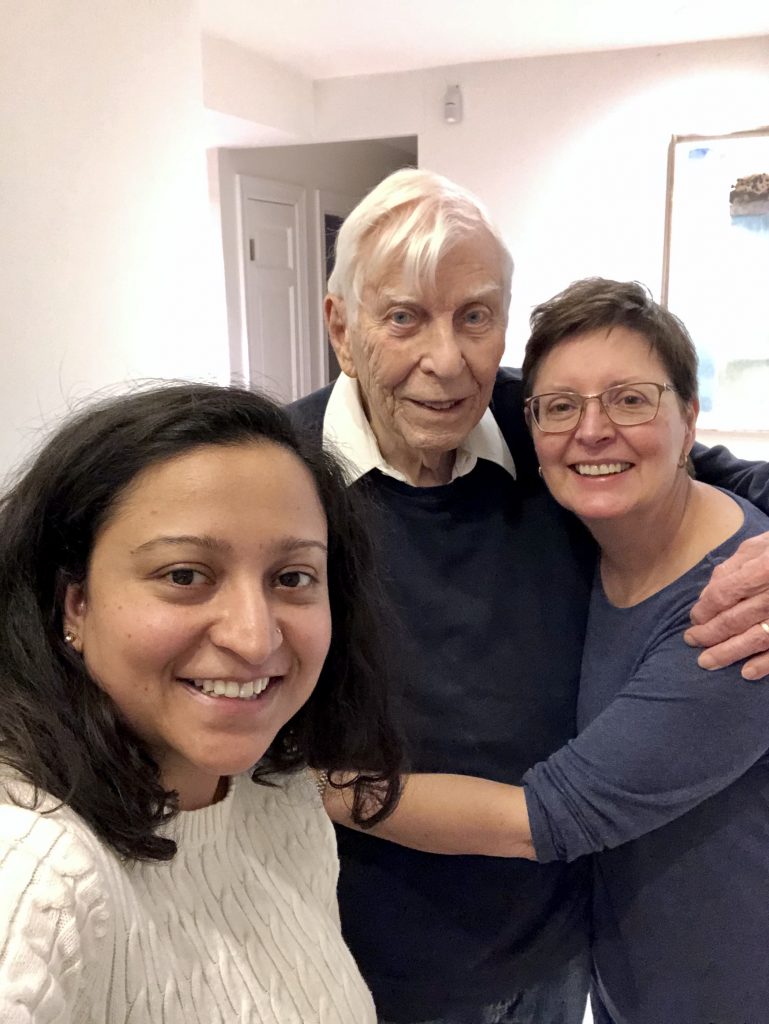
Alvin truly was the only person I ever met who was in astounding mental and physical shape until his passing at just a couple of months shy of 96. One might wonder what commonality two seemingly diametrically different people, raised on opposite sides of the globe and separated by two generations, might share outside of work. Somehow, we had a lot to chat about, from topics related to academia and teaching, to politics and family. In the last couple of months before his passing, we shared our vulnerabilities, like how physical pain can cause one to feel down and gloomy. Despite this, even while going through significant physical pain from his health issues, Alvin did not let this diminish who he was as a person: a deeply active, involved, and joyful man. He enjoyed cooking and was committed to crafting delicious and exotic recipes from his favorite cookbooks. Exactly a month before his passing, Alvin prepared for us a salmon dinner as excellent as the shrimp curry he made two months earlier. I will always remember the last exchange I had with Alvin, while walking out his front door after the wonderful dinner and commemorative selfie. He took the time to praise me for, in his words, “professionally” conducting a biweekly collaboration meeting earlier that day in which he too had participated. Pleasantly surprised, I marveled that someone of his stature would pay attention to such seemingly minor details and make it a point even to praise me. The larger point was clear, however: to Alvin, such details were hardly minor. Alvin truly cared and went out of his way to uplift and encourage others, especially junior scientists. I regret that I knew Alvin only too briefly, but I am sure I would feel this way regardless of how much time we had spent together.
We met Alvin in 1983-84. We had Caltech, and particularly Willy Fowler, in common. Over the years we came to appreciate that Alvin played a crucial role in so many of the wonderful things at Fermilab, most visibly the Tevatron and CDF. His presence added so much to the thriving intellectual climate at Fermilab. Rocky appreciated his support for the astrophysics program from its inception and growth. He continually prodded us to do even more and think even bigger.
Rocky got to know Alvin through Leon’s Senior Advisory Group meetings on early Monday mornings. Adrienne got to know him through explanations of his historical contributions (1959-2020), from the Main Ring to the Main Injector, in her interviews for the Fermilab History of Accelerators Project. His contributions steered the creation of the Tevatron and CDF, and his work affected most of the accelerators of international high-energy physics. Alvin was a “one-name” physicist who was known worldwide, like Galileo, Newton, Einstein, and Hawking.
Eventually our Fermilab interactions grew into a close personal friendship with both Alvin and Janine; attending their wedding and enjoying many organized as well as spontaneous dinners, neighborly help with gardening and snow removal in Warrenville, trips to downtown Chicago for the Lyric Opera (he said his favorite opera was Rigoletto and explained the plot to Adrienne during lunch in the Fermilab cafeteria) and Landmarks Preservation Council and Chicago Architecture Foundation gala events (he loved to dance, especially swinging rock & roll). We even skied the Alps together during Giorgio Bellettini’s winter schools in La Thuile, Italy.
Alvin was a happy and wise man. He was also careful and particular. He knew what he liked and was generous sharing his recommendations with us and our three children. His art collection of Martyl Langsdorf’s paintings was remarkable.
Alvin’s scientific prowess with superconducting magnets leading to the creation of the Tevatron was truly outstanding and is described in detail in Fermilab: Physics, the Frontier and Megascience. He kindly and joyfully shared many stories of his adventures in physics, in California, at CERN, with so many of us, his Fermilab friends and colleagues. What a legacy! Alvin was one of a kind and will be missed.
With great affection we extend our deepest sympathy and most sincere condolences to Janine and the family,
Adrienne and Rocky Kolb
August 30, 2020
“I came to Fermilab at the beginning of 2001 – just at the beginning of Tevatron Run II. By this time, I was already involved into Muon collider and Neutrino factory project; and therefore, it was natural that the first time I met Alvin was at one of the Muon collider meetings. At that time, I did not know that Alvin was one of the “Tevatron fathers” and his contribution into launching the muon collider effort. However, I could see that Alvin was one of the intellectual leaders behind this endeavor. One of recollections of this time is a discussion on how to describe accurately coupling between the transverse and longitudinal degrees of freedom. This discussion motivated me to start working on the subject. Although it was not much in demand in the Muon collider project, it became extremely useful years later in building the theory for optical stochastic cooling which we are going to test experimentally within next few months. For all these years Alvin was behind the Muon collider effort. Here I would like to mention two important contributions. …”
August 2020 – I worked with Alvin Tollestrup on the Tevatron magnets and always marveled at his penetrating physics insight along with his soft-spoken humility. Indeed, Alvin is one of my all-time heroes.
The quench performance of the Tevatron superconducting magnets was not progressing well. When Alvin came over to the magnet factory to help, the design and performance improved quickly. Applying his acute physics intuition, he instituted crucial breakthroughs. Stainless steel collars constraining the coils provided the application of preload necessary to assure a fully supported coil down to liquid helium temperature. The collars also ensured the quality of the field by enforcing precision placement of the conductors. Alvin also introduced the idea of wrapping the conductor with slippery Kapton tape that both maintained helium-bathed conductors and avoided small stick/slip, quench inducing movements.
The Fermilab Tevatron was a groundbreaking triumph of innovation. The design features of the Tevatron magnets introduced by Alvin were a key to this success as well as those of all subsequent superconducting accelerators.
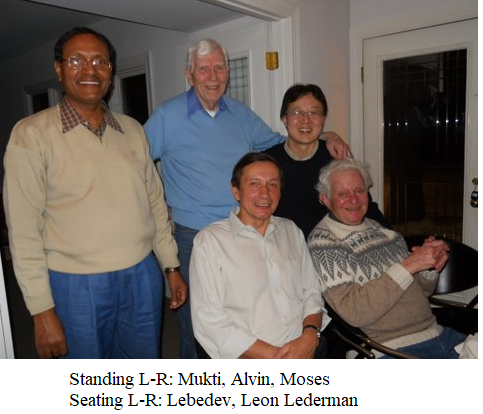
August 2020 – One of the highest points of my career as a physicist was the opportunity to spend over a year during the mid 1980s working closely one-on-one with Alvin. Our goal was to understand the constraint imposed by intrabeam scattering on the luminosity lifetime of the proposed Tevatron upgrade. I learned so much from Alvin’s innate ability to predict the outcome of complicated mathematical calculations. I have and will continue to cherish every minute of our collaboration. Luckily, I had the chance in 2016 after several decades to visit him in his office at Fermilab. We had another great, and inspirational for me, discussion about physics and life. Dear Alvin, rest in peace as you commune with God and the Angels.
August 2020 – I worked with Alvin during two periods, separated by more than three decades. The first one was at Caltech as a newly minted Ph.D. Alvin was my boss. The second was during my directorship at Fermilab, when, as Alvin would say, we had switched roles and I was his boss! In between those periods Alvin did his greatest work building the Tevatron and launching CDF, great achievements that are fully recognized by our community. I got to know Alvin better during my time at Fermilab and we became good friends with him and his wife Janine. In his late eighties he could run circles around younger colleagues with his analytical prowess and his expertise in the program Mathematica. His passion for the field and its future was inspiring! His work and optimism for the muon collider, a machine that could be fantastic but predictably well beyond his lifetime, showed his love and devotion for the future of our field.
August 2020 – It has been a great privilege for me to have known Alvin and to be among his friends for the past thirty years! When I joined Fermilab in late 1990, he recruited me to CDF and he has since been both a precious mentor and a true friend! For my first four years as Lederman Fellow at the Lab he was my officially assigned mentor. He evolved though to be the person whose professional advice I would seek before important decisions in my career.
Alvin was an excellent, hands-on physicist, who really understood and could communicate physics, with very broad expertise and interests. He was discussing physics till the last days of his life.
Especially helpful, friendly and supportive to young scientists, promoting their good ideas and helping them advance in their careers. He was doing his absolutely best to attract and keep talented young scientists at Fermilab. I have not met any other scientist of his status putting such an emphasis and effort in recruiting and helping to this extent young scientists.
He loved good company, and he also wanted young scientists, especially non-local people, to find friends and supporters at work. I still remember him opening his home for several of the “foreign” CDF postdocs during our first Thanksgiving in the U.S. and encouraging us to share and even cook at his home favorite foods from our countries. I had the opportunity and pleasure to enjoy many parties at Janine’s and Alvin’s home over the years.
I feel extremely privileged to have known Alvin the physicist, the mentor, the collaborator but also Alvin the human being, the husband, the father, the grandfather, the friend. Our field and our world are poorer without him; he has left though behind a lot for us to admire and to be inspired from!
August 2020 – In the summer of 1995, not long after the discovery of the top quark at the Tevatron, I was sitting at lunch at one of big round tables in the Fermilab cafeteria when Alvin joint us and started asking questions about top quark pair production. Yes, he spoke to Theorists too ! One of the questions he asked was “What are the spin-correlations between the top and the anti-top quark, and can they be measured at the Tevatron?” That one question lead to me writing a series of papers with collaborators on this subject starting with https://arxiv.org/abs/hep-ph/9512264
Alvin was always thinking and asking questions, he was a delight to talk too! He was also very supportive of younger scientists and helped me in an earlier, difficult part of my career. I truly thank him for that support.
I will miss Alvin’s insightful questions at the weekly wine and cheese seminar which always made the speaker and audience think!
August 2020 – “I came to Fermilab for the first time in Jan 1980 from Italy, with a small group led by Giorgio Bellettini. I was 31. Alvin told me about this fantastic machine they were going to build here, all superconducting magnets. It sounded like an impossible dream to many people at that time, but I did not need to think much, I was fascinated. So I joined CDF and then moved to Fermilab with my family for a four-month stay in the Fermilab Village at the end of the same year. And here comes Thanksgiving and he invites us to his home for dinner. Some of my relatives from Italy were visiting us and he invites them too. I appreciated that a lot, of course, although I didn’t know much about Thanksgiving at that time. …” Read the entire contribution here.
August 2020 – Alvin has left an indelible mark in the history of superconducting magnets and of technology for accelerators. His innovations, his ideas, his commitment have gained us a new territory: superconductivity for hadron colliders. LHC, with its magnets, as well as any future high field magnet based colliders has a strong debt toward Alvin: the achievement of Tevatron magnet system has been a monumental enterprise, indeed.
I’d like to remember also his last period when, despite the age, he was pursuing new HTS technology for future accelerator magnets with great enthusiasm and with careful experiments.
August 2020 – “Alvin has not only made a huge impact to the physics programs and the superconducting magnets for proton colliders but also left behind a legacy to the general society. Today at 4 pm my wife and I are going to attend the back-to-school meeting for our son, Max, a healthy second grader. But in 2012 when Max was three months old, he received a seven hour-long laparoscopic surgery to remove a cyst outside his liver. Such complex surgery was not possible without the 3D images from the MRCP. …” Read the entire contribution here.

June 2020 – “We had arrived in the US from Russia in 1996. Joining Fermilab was a ‘dream come true’ as the Lab was known for its leadership in accelerators and beam physics. Outside of the Lab, its most known symbols were, of course, Bob Wilson and the Tevatron, then the world’s most powerful accelerator. We quickly learned who Alvin Tollestrup was – one of the most prominent accelerator builders, the person who made the Tevatron magnets a reality that shaped not only the US particle physics for several decades but also set up the direction for the next generation of the energy frontier machines, from the SCC to RHIC, from LHC to current ideas on future circular colliders. … ”
I was privileged to be one of the last people Alvin worked with. We met when he was 91 and we kept working right up to his last weeks. So I knew him just for the last four years. I was one of a small group of Fermilab scientists trying to figure out new ways to detect axion dark matter particles. This was before we had an officially approved project, funding or even any lab space and we were trying to understand what we could do that other people hadn’t thought of yet. Lots of ideas were bouncing around our little meeting room on the 6th floor of Wilson Hall and it was a really fun time, the most creative initial phase of a new project.
Somehow Alvin found out what was going on – it was a floor down from his office – and he started to show up each week. Until then, I had been familiar with Alvin mainly from old photos I saw around the lab in which he was shown inspecting pieces of lab equipment or buildings under construction in the 1970s and 80s. I was surprised that somehow his appearance had barely changed. And I can remember it was a great feeling to see this famous man sitting there, like an endorsement of the new things we were trying to do.
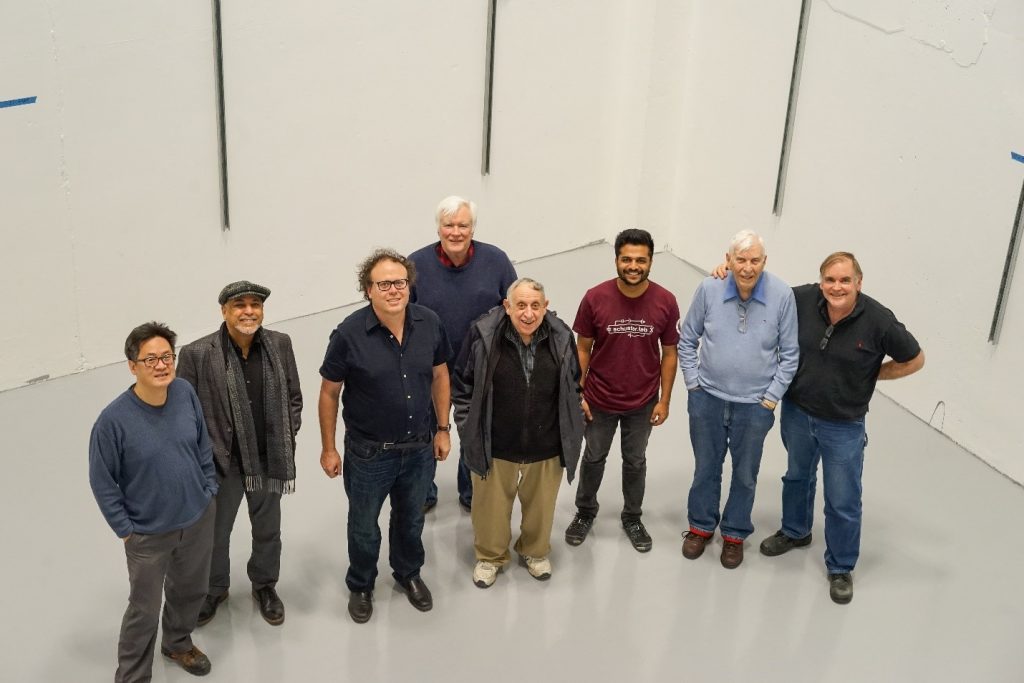
I remember that his questions often redirected us into areas we hadn’t considered. He had an intuition for microwave engineering which I think he had been developing since WWII when he was a radar technician in the navy. To find the axion dark matter, we first try to convert it into microwaves using a magnet, so this was really at the center of his competence. Much of the work we ended up doing together was detailed modeling of microwave fields. He got very excited about the power of modern electromagnetic simulation software and pretty soon had mastered a computer code called “Ansys High Frequency Structure Simulator” to model our detector ideas. I’m quite sure he was the only 95-year old user of that code. I was incredibly impressed.
I was always curious to understand how Alvin was able to remain so creative and productive in research even in his 90s. He had as much creativity as anyone in the room. This is a secret I feel that I need to know. Progress on the big issues in our field, such as what is the dark matter, is too slow. I wonder how we are ever going to figure it out before I retire? And here Alvin was holding out the promise that I could get another 20 or 30 bonus years of true productivity. If I could only learn the secret. I wish it was something simple. I’ve joked that two important parts of it seemed to be not eating lunch in the Fermilab cafeteria and not getting too involved in lab management.
Well, I’m sure that many of us at Fermilab could probably benefit from skipping a few cafeteria meals, but I guess we didn’t need Avin to show us that. The second part is probably more important. I noticed Alvin appeared to be looking a little sleepy when our conversations turned to strategizing about how to get the DOE to pay for our research. Unfortunately this happened more and more after the initial exciting conceptual phase was over. Not to speak of the endless video conferences on “zoom”. He probably had the right idea to leave the meetings, proposals and most of the Powerpoint work to the younger generation. But he was very excited by technical problem solving and data analysis and that was why he was there.
Despite the inevitable change in tone, thankfully, we were still coming up with a few exciting ideas right up to the last days. Alvin was clearly stimulated and I like to think it helped keep him going. And in fact, I am still following up on things that emerged in my very last discussion with Alvin.
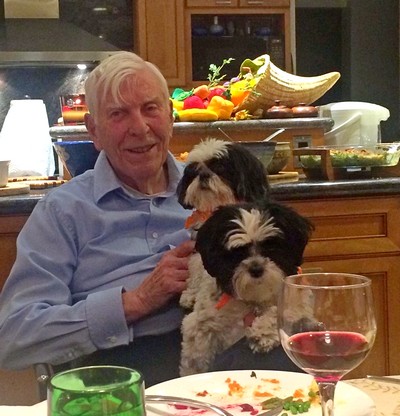
August 2020 – “I remember that first time I met Alvin in a workshop at ANL in 2003. Rolland Johnson and Moises Kuchnir introduced me to him in a lunch break. We discussed about an induced magnetic field from a field emission electron in a gas-filled RF cavity by writing Maxwell’s equation on a napkin. As many people feel for him, I was immediately captured his warm personality. In a way back to the conference room, Moises whispered me that Alvin is the person who leads the discovery of top quark! After that, I often visited his office and talked about a lot of physics. He was always smiling even I asked him a crazy idea. …”

